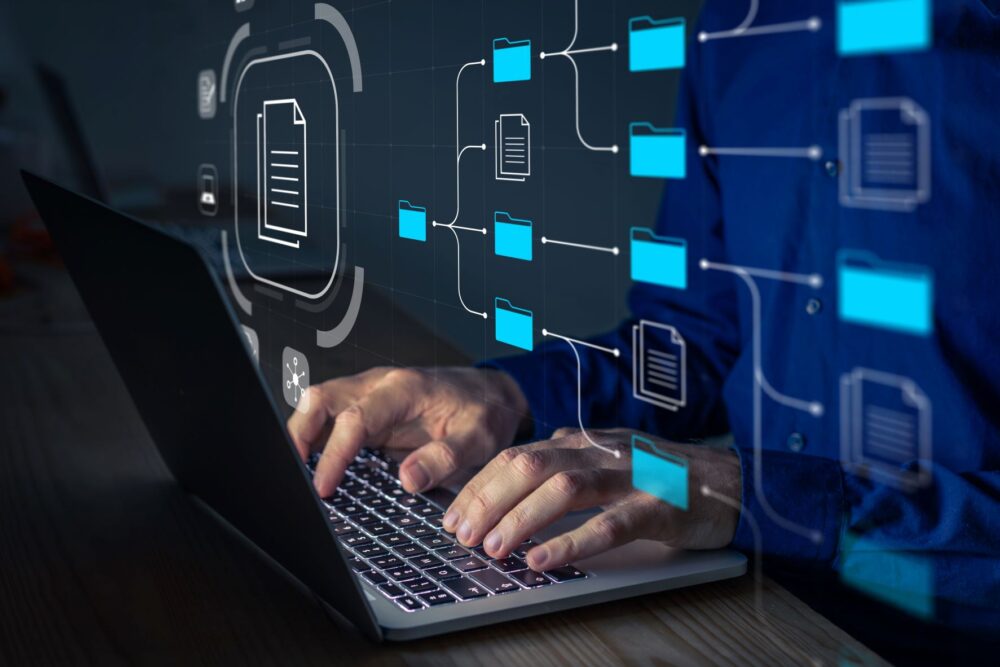 Going paperless refers to the handling and storing of documents through digital means. This is contrary to the conventional way that involves using paper to perform the same processes.
Going paperless refers to the handling and storing of documents through digital means. This is contrary to the conventional way that involves using paper to perform the same processes.
Why go paperless? With the advent of technology, digitization has greatly affected the way documents are handled in the office, as businesses have become more reliant on communicating electronically. Apart from saving on time and operational costs, digitization can greatly reduce the workload, make the access and retrieval of documents seamless, secure document storage, make sharing of documents easier, among others.
It’s now even possible to fax without a fax machine. All you need is an online program or service that enables you to upload documents and images to your device and send the same to a fax number.
Going paperless needs careful strategy and is not something that can be done overnight. Moreover, certain aspects have to be taken into consideration and cannot be overlooked. Below are some steps that may be implemented to gradually and eventually transition into a paperless business:
- Prepare Personnel For The Transition
Personnel should be informed about the transition to prepare them psychologically as they’ll be directly affected by the operational changes. You can offer them incentives for motivation. They should be upskilled on how to use gadgets and unfamiliar software that’ll be introduced to enable a smooth transition and boost their confidence.
- Store Documents And Files Digitally
The first step of going paperless is to input and store documents digitally. Digging through piles of paper or racking through cabinets to locate files and documents can be frustrating. The solution lies in storing documents digitally for quick and easy retrieval. It also encourages less use of paper to perform processes.
Storing files digitally also enables the following within your business:
- The backup of important files and documents
- Sharing of documents faster and easier
- Controlling document access
- Eliminates the need for bigger storage space
- Use Electronic Presentations
The use of printed material for presentations can now be considered impractical. Presentation software like PowerPoint and Corel, among others, should be emphasized. Presentations can be posted directly for the intended recipient. Otherwise, if the presentation is intended for a larger audience, like in a boardroom, let one person take notes on a computer through note-taking apps while another is doing the presentation.
- Allow Electronic Communication
Printed memos, reports, and notes consume a lot of paper. Their distribution also takes time since they have to be physically transported to the intended recipient. If the intended recipient is not present, the transmission of messages may be delayed.
On the other hand, electronic communication enables real-time transmission. Delays are therefore minimized, and efficiency is improved. Personnel should be encouraged to embrace the advanced ways of communication through email, messaging apps, or other electronic means available.

- Digitize The Finance Department
Over the years, documents used in accounting like invoices, receipts, vouchers, and the like were filled manually. After being prepared, they were dispatched by hand or post. On top of that, records and backup were stored in cabinets or boxes, which occupied a lot of space.
But, with the advent of technology, such processes are now streamlined. Digitization enables the creation and transmission of documents, digitally. Also, one of the many advantages of digitization is the ability to compare two Word documents using specialized software, which is becoming increasingly valuable for businesses and individuals who need to track changes between versions or compare similar documents for differences.
- Go Digital In Marketing
Marketing is important in promoting a business. Conventional marketing involves sending written material through snail mail, using print media, television and radio, roadshows, one-on-one salespersons, to name a few ways. In these forms of marketing, considerable amounts of paper are used to produce materials to reach a wider audience. Other associated expenses like transportation costs also come into play.
However, digital marketing, which involves the use of digital technology, is less costly and more efficient. The target audience can be reached faster and more effectively.
Conclusion
The idea of going paperless may seem daunting in the beginning, leaving you anxious knowing there are no physical copies for backups. You may start thinking, what if the system crashes? But don’t worry. An external hard drive or a second cloud service is the solution to back up all your files and documents. You may invest in one or both for your peace of mind.
Going paperless also comes with a little cost, which is necessary for a successful transition. You may be required to purchase more gadgets for use in the office. Investing in more electronic gadgets may appear costly from the outset but eventually, you’ll save on costs compared to when you were using paper. The proper steps must be implemented gradually when going the paperless way. This enables the early detection of issues that may arise and need to be fixed as the transition continues.
Comments